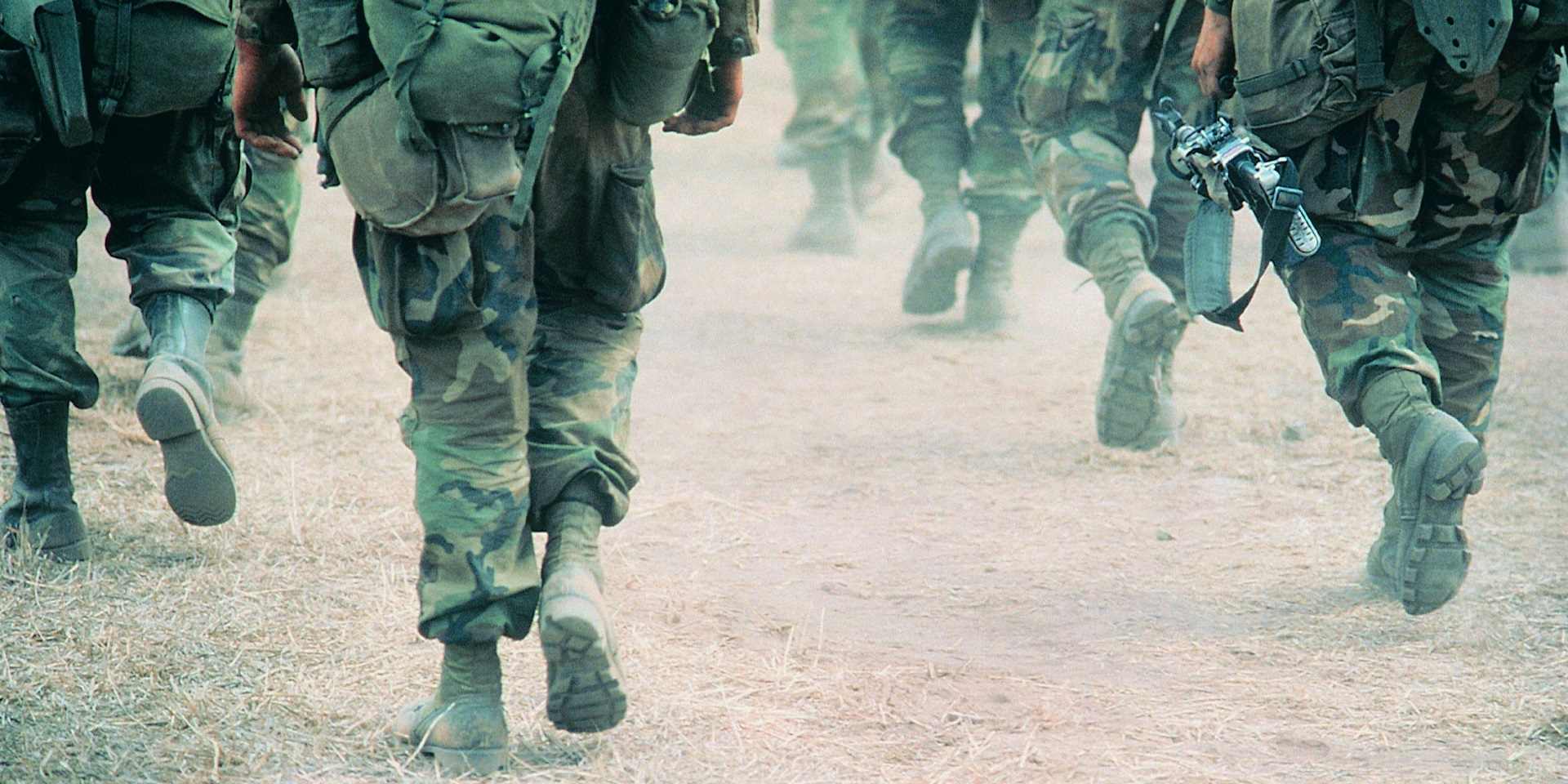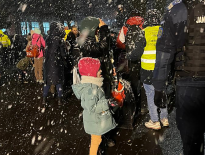It has been said before that the wars of the 21st century are hybrid wars, in the sense that, in addition to the environments in which the hostilities have taken place until now–land, water and air–a fourth environment has appeared: the virtual one.
Therefore, the battles no longer take place only on land, sea and air, but also in the information space—that is, where information flies at the speed of radio waves (300,000 km/s), where the line of work is information, and information management becomes a priority, even more important than the strategy of the infantry, the endowment of the navy, or the planning of air raids.
“The first casualty in war is truth.” (Popular wisdom)
We are not referring here to telecommunications and transmissions, nor to war-specific espionage (intelligence and counterintelligence), nor to war propaganda, which was perfected by the Hitlerite and Stalinist armies. With the entry of human society into the age of the image, the information war has become an imagological war.
We all remember the images from the Iraq war (1991) or the airstrikes on Serbia (1999) that we were shown. We could all witness, in real-time, the bombing of Baghdad and Belgrade by the United States and its allies. Since then, visual images have accompanied all “troop movements,” including terrorist acts (9/11, or the Charlie Hebdo shooting), as well as counterterrorism operations, such as the capture and killing of Bin Laden (2011).
These days, we are seeing terrifying scenes from Ukraine on our TVs, computers, or smartphone screens, images which we have only seen in war movies, until now. We are watching death live! How did such a monstrosity come about? Is this an uncontrolled evolution of war strategies? Or is this the natural evolution of human communication and its technical support, communications?
Information warfare vs. semiotic warfare
It is known that soldiers from all over the world have called the new weapon “information” and the new type of war “information war.” Provocative, but incorrect. The strategy of disinformation through fake news has limits: false information alone does not manipulate, only misinforms, and can only contribute to manipulation. Specialists in semiotics—that is, in the science of signs and meanings—say that information is only the “message” that the “reader” greets with all their cultural load; its reception is an extremely complex activity, which they call “reading,” and which coincides with the decoding of the message.
Only the result of the reading can be considered a product of manipulation. The manipulation is not in the message, but in the decoding. The one who wants to manipulate knows this and deliberately influences the reception structures of the receiver, their cultural load. This is how Yuri Bezmenov, a former KGB officer, explains the manipulation of entire peoples, for which he uses a euphemism: “ideological subversion.”
This means it is not an “information war,” but a “semiotic war”! The first formulation expresses a naive understanding of communication, belonging to common sense, where the message is thought of as precursory and independent of the communication process, and the recipient is seen as a passive receiver, unable to change the message in the process of interaction. The second formulation reveals an understanding that the message is the product of the interaction, and that the receiver is an active one, whose activity contributes decisively to giving meaning to a message.
War propaganda: A proposal of perceptions that are meant to fabricate representations
Reducing the semiotic war to a so-called “information war” is like reducing an awareness campaign to an information campaign, or the persuasion process to a simple transmission of information. However, some authors have proposed the expression “imagological war.” That is fully comprehensive either, but we can say that a step forward has been taken. Why imagological? Because, when I want to impose my interpretation of reality, I use crafted words, expressions and phrases, but I also work with carefully selected images about that reality. I will use visual images in the hope that the target audience will form, over time, a certain mental image of the reality in question.
I therefore offer some perceptions in order to provoke certain representations (defined by psychologists as images of an object in its absence). Most of the time, people confuse the two levels of empirical knowledge; journalists and politicians have become accustomed to using the term perception, but are thinking about representation. Russia’s foreign minister, Sergei Lavrov, gave us the latest example, when he said on February 28th that no economic sanction will change their perception of Ukraine.
Why are perceptions so important? Because they participate in the creation of a representation, which in turn generates an attitude. Representations are not neutral; they contain a negative or positive valorisation of the reality in question, generating negative or positive attitudes. In turn, attitudes generate behaviours (decisions, facts, and actions); attitudes are at the border between thought and action—it is their “common denominator.”
I have explained these things so that readers can understand why so many visual images are used in the process of influencing our fellow human beings: these images provide perceptions, which are the main raw material from which representations are made; in turn, representations dictate our conduct. A Christian believer understands this mechanism very easily: our life of faith depends very much on our representation of God.
The differences between Christians and Muslims are not only related to the traditions of the two religions, but also to the representation of God, to the mental image with which the followers of the two religions operate when they think of Him.
Ukraine war: fake news and misleading rhetorical devices
Still, the path of the receiver from the visual image to the mental image that the one who broadcasts the visual image wants to plant is not free from obstacles. We find many counter-propaganda channels involved in this melting pot, such as the famous Russian site Sputnik. The propagandists here, who call themselves “journalists”, have been trying these days to misinterpret some images broadcast on Ukrainian television, to avoid them turning into a representation: the Russian military–war criminals.
There was a story about a block of flats bombed by the Russian army, showing a woman with a bandage on her head and a wound on her face. Sputnik said that the images were from 2018 and that the block had exploded due to the natural gas installation; their Ukrainian counterparts had “manipulated” the image in order to propagate a diabolical representation of the Russians. Well, the journalists from the Romanian trust Libertatea (Freedom) followed the events and found the woman, Olena Kurilo, who lives in the city of Ciuhuiiv, Kharkiv region; “I was the victim of a missile attack,” she said.
When she was told that voices were claiming it was a set-up, Olena pointed to her bloody eyes and wounds on her face, saying, “I want to tell you it’s true. Please, look, it’s a real wound. I want you to see this so that no one will have any doubts. Here are the shards of glass that got stuck in my skin when the explosion occurred.”
Another attempt at softening up reality was made on Saturday, February 27th by a Romanian senator, in a Facebook post, where she simulated a fight against disinformation and raised questions about Russia’s attack on Ukraine and the bombings in Kyiv: “Let me tell you a little secret: you have Internet! I really don’t understand why you aren’t searching for images directly from the source. Attached to this post is a picture taken from several live cams in Kyiv. Please tell me, where are the ‘atrocities’? Where are the bombings, where is the madness of the front line?” Her implication was that what the camera images that were shown by her did not reveal, does not exist…
So far, we have talked about the efforts of Russian propaganda to limit the proportions of the imagological disaster into which Vladimir Putin has dragged the Russian Federation. However, the arsenal of war propaganda includes many more weapons, including those used by people who are on the side of Ukraine, and who believe they are serving the cause of the country:
- images of an explosion caused by Israel’s attacks on Gaza and presented as explosions in Ukraine;
- fighter jets flying in formation and presented as attacking Ukraine, although the photo is taken at a 2020 military parade;
- a video of an explosion from Beirut, made during the explosion at a liquefied gas tank presented as taking place during the Russian army invasion of Ukraine;
- an image from September 2021, of Ukraine President, Volodymyr Zelenskyy, when he was on a field inspection presented as him being in a battle uniform on the front line (the image was posted by a Facebook user, an influencer who is not Ukrainian, but believes this is how you help the Ukrainians).
The Romanian National School of Political and Administrative Studies (SNSPA) operates a research and monitoring group for counterfeit news, called “Anti-Fake,” consisting of young teachers. They publish periodically a report, called “Anti-Fake: the Week in 5 Minutes,” which aims to be “an answer to the problem of (pseudo) information bombardment.” Recently, on February 28th, they released the report “Ukraine war: Misleading rhetorical devices in the information war”, which presents four major themes of disinformation that aim to distract Romanians from the war in Ukraine and trivialise the facts:
- “What do we have to do with Ukraine? We are 560 kilometres from Kyiv and 800 kilometres from the Crimea.” (In fact, Odessa, one of the targets of the Russian army, is 557 kilometres on land from Bucharest, and can be reached by plane in 30 minutes; in addition, there were fights on Snake Island, located 45 kilometres from the coast of Romania);
- The sanitary dictatorship is replaced by the military dictatorship: “So far they’ve terrorised us with the pandemic, now they’re terrorising us with war.” (A kind of illicit comparison, called analogy);
- Ukraine is a state hostile to Romania: “They stole Northern Bukovina from us.” (In fact, the occupation took place when Ukraine did not even exist as a state; in addition, this war endangers all Ukrainian citizens, including ethnic Romanians);
- “Everything is a charade.” Despite the obvious, clear and direct evidence, the reality of the bombings is denied and the human tragedy caused by the war is minimised.
We can see what dogmatic nationalism leads to, which no longer allows people to see reality as it is, by studying the subject of Ukrainian nationalism (which, some suggest, should curb our enthusiasm and make us wary of the help given to Ukraine). This country was artificially formed by the Soviets by stealing territories from the neighbouring countries, half a million Romanians from historic Maramureș, Bugeac and Northern Bukovina being permanently humiliated, ignored and assimilated by the Ukrainian authorities; in 1918 and 1945, Ukraine wanted to take Bessarabia from us, and in 1992 the Ukrainians fought against the Romanians from Bessarabia for the separation of the Transnistrian region, and in that conflict, they were on the side of Russia.
We find ourselves in a situation of nationalism versus nationalism—there are people who condemn Ukrainian nationalism through the lens of Romanian nationalism. It is hard to believe, but it is true: nationalist fanaticism does not allow the “infested” to perceive social reality from the perspective of human rights or through the love of fellow human beings—one of the fundamental values of Christianity, which distinguishes it from other religions and gives it uniqueness.
I don’t think there is a better example in recent history of an anti-patriot nationalist than Vladimir Putin. Considered by many to be a “great nationalist,” dedicated to “Christian tradition and values,” who went on to regain territories and restore the prestige of Mother Russia, and who makes donations to Mount Athos, Vladimir Putin has brought his country into the most dangerous situation since the collapse of the Soviet Union: surrounded by hostile peoples and states that have sanctioned it, devoid of the somewhat important military allies, economically weakened and logistically weakened, with a cultural elite hostile to the Kremlin and a financially blocked oligarchy about to explode against the rulers.
The Russian Federation is like a cornered beast, which can no longer backtrack, but can’t go forward either. In situations like this, the cornered victim is capable of anything and is willing to drag everyone else after them.
This is exactly what the Kremlin’s main propagandist, journalist Dmitry Kiselyov, said a few days ago on Russia-1 television station: “Why do we need a world without Russia in it?” This statement, poetic but irresponsible, reminds us of the ancient maxim, “Fiat Justitia, et pereat mundus!” (Let justice be done, though the world perish!). It’s just that, this time, it’s no longer about universal justice, but about the existence of a country that, by the way, no one has threatened.
In reality, the Kremlin is not afraid of the disappearance of Russia, but of the disappearance of the current regime, which ensures their political domination, economic supremacy, personal prosperity and the satisfaction of their unlimited megalomania.
How quickly can one go from “Orthodox faith” to the destruction of the Earth! If they are as faithful as they say they are, Putin and the Putinists should heed the warning given by the apostle John in the book of the final revelation: “The nations were angry, and your wrath has come; the time has come…for destroying those who destroy the earth” (Revelation 11:18).
I am very afraid that their orthodoxy—this kind of belonging to a tradition rather than faith—mixes representations and criteria: some worldly criteria are applied to the Godhead and some divine criteria are applied to a worldly reality, such as a nation or people. Why is phyletism[1] a sin? Because putting the love of country next to faith in God, and the nation next to Divinity, is a form of idolatry. These people should be reminded periodically of what God tells us in several passages of His letter to people: “Be still, and know that I am God; I will be exalted among the nations, I will be exalted in the earth” (Psalm 46:10).



















